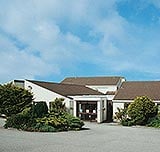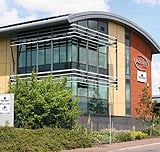
Search by region


The treatment involves heating and closing the vein from within, using radiofrequency energy. This is usually performed whilst you are awake under local anaesthetic on a walk-in walk out basis, although it can also be performed under general anaesthetic. This technique works very similarly to Laser (EVLA) and is recognised by NICE as being equivalent. There are a few technical differences between the 2 techniques, but they are essentially very similar. The RFA device is slightly larger than a laser so it is placed through a small device called and angio sheath, but patient may experience less post operative pain than laser. Because of its size only straighter veins such as the long saphenous vein or short saphenous vein are suitable. RFA is only suitable to treat veins up to 12mm in diameter. Your consultant will discuss the options with you at your consultation.
Before the procedure the consultant will use an ultrasound machine to scan and mark the position of the end of the vein in the groin. You will then enter the treatment room or operating theatre and local anaesthetic injected. A special catheter is then inserted into the vein through a small 2-3mm cut just below the knee.
Once positioned, radiofrequency energy is gently delivered to seal and shut the faulty vein. A small dressing is applied, along with a special compression stocking which you will need to wear for the next 7 to 10 days. Following this procedure most people have an instant relief of symptoms.
The procedure generally takes around 30 – 40 minutes, and following this you will normally be free to leave after in as little as an hour. Your consultant will discuss this with you at your consultation.
What are the Risks of RFA?
RFA like EVLA is one of the safest treatments available for varicose veins, serious complications are extremely rare:
Thrombophlebitis: You may feel the vein that has been treated become hard and tender. Varicose veins that feed from the treated vein may also become hard and lumpy as part of the healing process. The phlebitis will resolve over a few weeks.
Nerve damage: As nerves can lie alongside the veins these may also become damaged by the heat or by Phlebectomies and a few patients notice small patches of numbness on their skin. These usually resolve over a few months.
Burns: Although it is possible to burn the skin with the laser in practice this is very rare indeed.
DVT: A DVT is a blood clot in the deep veins in the leg. It is a recognised complication of surgery and can be dangerous if the clot breaks away and travels to the lungs. The risk of getting a DVT after RFA is less than 1 in 200 for most people.


This year Ramsay Health Care celebrates 60 years of global expertise in healthcare.
We speak to Julie Wood, Medical Secretary Team Leader as she celebrates 35 years at Ramsay Health Care UK.
Luke Charters - Labour’s Candidate for York Outer standing in this year’s General Election – has visited Clifton Park Hospital in the constituency to meet local doctors, nurses and wider staff working at the hospital to deliver high quality healthcare to patients across York, and further afield.
Purpose Coalition Engagement Director and former Member of Keir Starmer’s Shadow Cabinet, Nick Forbes CBE has visited Purpose Coalition partner and leading independent healthcare provider, Ramsay Health Care UK, to see first-hand its work at Tees Valley Hospital.